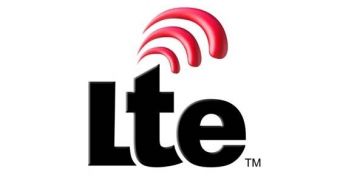A new report published by US-based research firm Global View Partners in partnership with the GSMA shows that one of the main factors that will influence the growth of LTE is the licensing of the 2.6 GHz band. According to the report, this will be a key factor when it comes to “unlocking the benefits of global scale economies in the Mobile Broadband market.” The 2.6 GHz spectrum is said to be the ‘3G extension band’, and is capable of offering the necessary capacity for meeting demand for Mobile Broadband services and for sustaining the launch of LTE networks all around the world during 2010.
“There is clear evidence that the volume of data flowing over mobile networks is growing rapidly and is being accelerated by the popularity of smart phones and the growth in music and video downloads,” said Tom Phillips, chief regulatory affairs officer at the GSMA. “The report highlights that the 2.6 GHz band will allow operators to address rapidly increasing traffic volumes in an efficient and harmonised way. Recent licensing of this band in Hong Kong, Norway, Finland and Sweden, for example, has highlighted that there is more demand for paired (FDD) than unpaired spectrum (TDD) and that the ITU’s recommended Option 1 plan is the best structure to stimulate market growth in a technology-neutral and competitive environment.” The report also shows that the first steps towards the allocation of the 2.6 GHz frequency have been already made in Europe, as the ITU Option 1 plan specifies (ITU Option 1 for the 2.6 GHz recommends 2x70MHz of FDD (Frequency Division Duplex) at both ends with a centre block of 50MHz of TDD (Time Division Duplex)). European Union members seem to have already agreed to the fact that “this objective will best be fulfilled in a manner that is harmonised and coordinated across all countries in the region,” the report notes. 2.6 GHz frequencies are expected to be awarded in most Western European countries as well as in Brazil, Chile, Colombia, and South Africa during the following two years.
According to the research, the 2.6 GHz frequency is seen as the first option for carriers when it comes to the acquisition of 2x20 MHz of contiguous spectrum, something that will offer them the possibility to deliver LTE services at maximum performance. At the same time, the report mentions that LTE is “the next-generation Mobile Broadband technology for both GSM and CDMA operators,” and that it will provide wider bandwidths for increasing data capacity especially in dense urban areas. The 2.6 GHz spectrum is seen as the ideal complement to the 700 MHz spectrum, and should result in cost-effective nationwide coverage of Mobile Broadband in all areas.
The report is available for download here.

 14 DAY TRIAL //
14 DAY TRIAL //